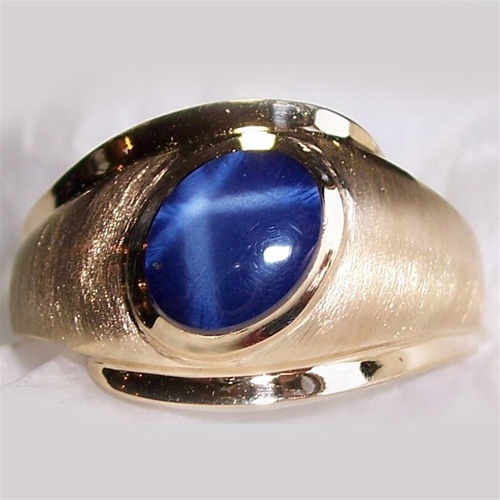


Translated into technical terms it means a blue color with a purplish overtone. The color of the stone is said to be good, with a blue color having a hint of lavender. Star sapphires are usually cut as round or oval-shaped cabochons with a dome-shaped face on which the gliding 6-rayed or rarely 12-rayed star appears, when exposed to a direct source of light such as natural sunlight or light emanating from a torch light or a flash light.

In gemological terms this means an oval- shaped cabochon-cut stone. The finished stone was reported to have the size of an egg-shaped cantaloupe, in common parlance. The cut, shape, color and clarity of the stone The remaining 60 % represented non-gem grade material that had to be removed necessarily in order to turn out a gem-quality star sapphire of reasonable grade. Thus only 40 % of the original weight of the stone was retained in the finished gemstone. After cutting and polishing, the finished stone weighed 9,719.5 carats (1.944 kg). In terms of carats the weight of the rough stone works out to 23,850 carats. The massive rough stone when unearthed weighed 10.5 pounds equivalent to 4.77 kg. The massive size of the blue star sapphire isolated it from the rest of the famous blue star sapphires in the world whose weights were around 500 carats and less, making the sensational stone an incomparable star sapphire among other star sapphires in the world, appropriately named “The Lone Star” sapphire.Ĭharacteristics of the gemstone The weights of the rough and finished stones In terms of weight “The Lone Star” is 17 times larger than its immediate rival, the “Star of India.” In this sense Harold Roper’s star sapphire is indeed a “Lone Star”, propelled to the coveted position of the largest blue sapphire and the largest blue star sapphire in the world, with no immediate prospect of a rival surfacing in the foreseeable future. Previously, the largest blue sapphire in the world was the 563.35-carat “Star of India”, a Sri Lankan gemstone owned by the American Museum of Natural History, New York City. It is not known exactly what inspired the name “The Lone Star” for this massive blue star sapphire weighing 9,719.5 carats, discovered in the mountains of North Carolina in June, 1989, by Harold Roper, a resident of the small hamlet of Marble.


 0 kommentar(er)
0 kommentar(er)
